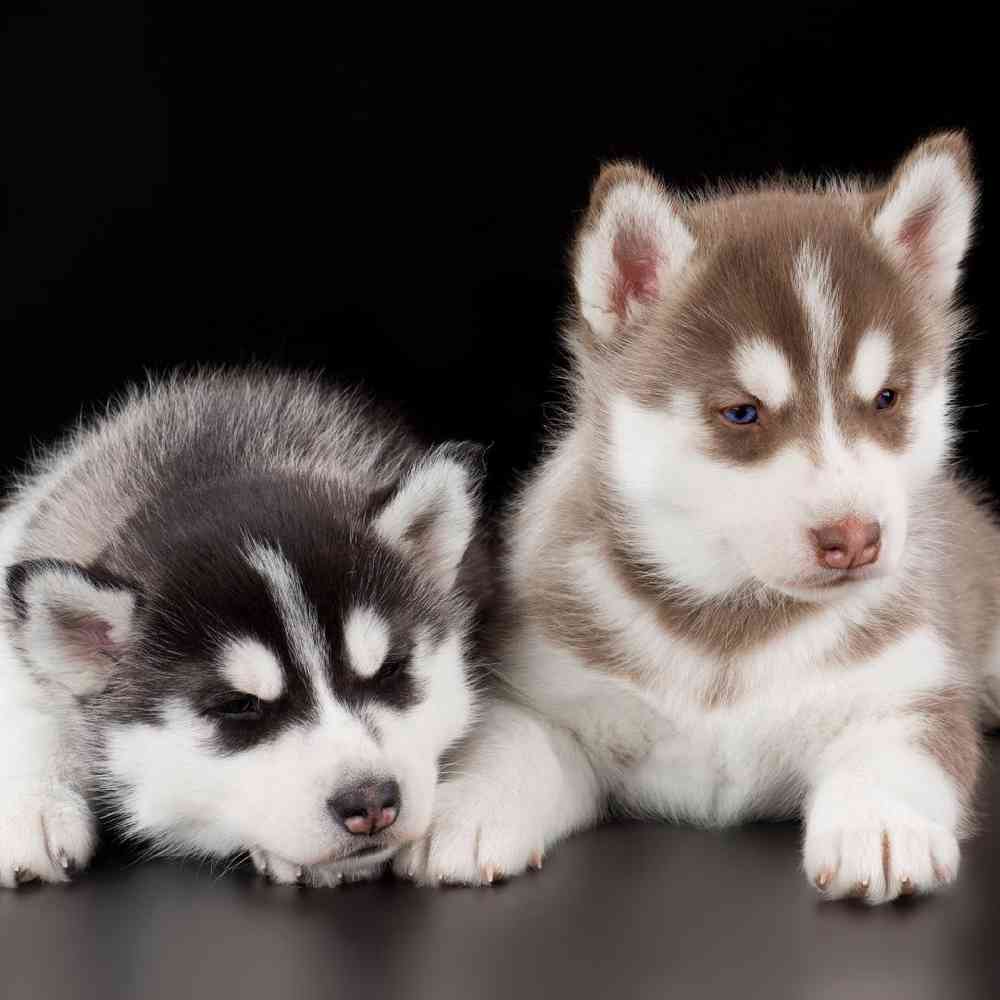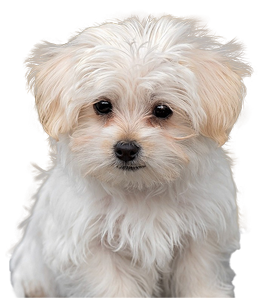
AKC Registrable
Family Dog
Siberian Husky
Huskies are very alert and outgoing but has a gentle and friendly side as well. They love other dogs, and has a zest for outdoor activities!
Available Pups
Puppy Knowledge
Breed Info
Clubs, Registries & Associations
American Canine Association Continental Kennel Club Universal Kennel Club International American Kennel Club United All Breed Registry America's Pet Registry, Inc. United Kennel Club (Based on breed recognition. See store for details on this particular puppy.)
Group
Working
Heritage
An ancient breed used by the Chukchi Tribe in Siberia, the Siberian Husky was used to herd reindeer, guard the herds and to pull sleds. Because of great speed and stamina, this breed was brought to Alaska in 1908 for use as sled dogs during the Nome Gold Rush. The Siberian Husky skills are sledding, carting and racing.
Description
Medium, up to 20-24” at the shoulders, weighing anywhere from 35-60 pounds. The Siberian Husky is a strong working dog with a dense double coat that can weather temperatures as long as –75 degrees F and comes in colors of white, silver, gray, sable, black and white, red and white, gray and white, sable and white, and red-orange with black tips.
Health Awareness
The Siberian Husky has a life expectancy of 12-15 years and is prone to hip dysplasia, eye disorders, epilepsy, and skin issues.
Personality
The Siberian Husky is playful, social, alert, high energy and highly intelligent. Training will not be an issue, but their willingness to question your decisions can be a challenge. This breed is a sled dog and have the innate ability to make their own decisions, questioning whether you are right or wrong. You need to be a calm, knowledgeable, and humane owner giving consistent and committed leadership to your Siberian Husky using only motivational training methods. Always wanting a job to do, this breed will become destructive when bored. And they also like to dig and roam. Never take your Siberian Husky off leash unless you have a bulletproof recall.
Exercise/Energy Level
The Siberian Husky requires a long, brisk daily walk with off-leash play and running in a safe, fenced area. They also need mental stimulation to prevent boredom and destruction, so be sure to provide your Siberian Husky with plenty of interactive toys that challenge their problem-solving skills. This breed does not do well in warm temperatures. Be sure to get your veterinarian’s permission before exercising your Siberian Husky in warm temperatures.
Additional Information
Grooming Requirements: Requires daily brushing and bathe only when necessary. Coat: Medium Shedding: Seasonally heavy shedding Hypoallergenic: No, due to shedding Apartment Living: Good for apartment living if given sufficient exercise Lap Dog: No Good With Children: Good with children when well socialized at an early age. Good With Other Pets: Good with other dogs when socialized at an early age; not trustworthy with cats or other small non-canine pets.
Breed Standard
General Appearance
The Siberian Husky is a medium-sized working dog, quick and light on his feet and free and graceful in action. His moderately compact and well furred body, erect ears and brush tail suggest his Northern heritage. His characteristic gait is smooth and seemingly effortless. He performs his original function in harness most capably, carrying a light load at a moderate speed over great distances. His body proportions and form reflect this basic balance of power, speed and endurance. The males of the Siberian Husky breed are masculine but never coarse; the bitches are feminine but without weakness of structure. In proper condition, with muscle firm and well developed, the Siberian Husky does not carry excess weight.
Size, Proportion, Substance
Height--Dogs, 21 to 23½ inches at the withers. Bitches, 20 to 22 inches at the withers. Weight--Dogs, 45 to 60 pounds. Bitches, 35 to 50 pounds. Weight is in proportion to height. The measurements mentioned above represent the extreme height and weight limits with no preference given to either extreme. Any appearance of excessive bone or weight should be penalized. In profile, the length of the body from the point of the shoulder to the rear point of the croup is slightly longer than the height of the body from the ground to the top of the withers. Disqualification--Dogs over 23½ inches and bitches over 22 inches.
Head
Expression is keen, but friendly; interested and even mischievous. Eyes almond shaped, moderately spaced and set a trifle obliquely. Eyes may be brown or blue in color; one of each or parti-colored are acceptable. Faults--Eyes set too obliquely; set too close together. Ears of medium size, triangular in shape, close fitting and set high on the head. They are thick, well furred, slightly arched at the back, and strongly erect, with slightly rounded tips pointing straight up. Faults--Ears too large in proportion to the head; too wide set; not strongly erect. Skull of medium size and in proportion to the body; slightly rounded on top and tapering from the widest point to the eyes. Faults--Head clumsy or heavy; head too finely chiseled. Stop--The stop is well-defined and the bridge of the nose is straight from the stop to the tip. Fault--Insufficient stop. Muzzle of medium length; that is, the distance from the tip of the nose to the stop is equal to the distance from the stop to the occiput. The muzzle is of medium width, tapering gradually to the nose, with the tip neither pointed nor square. Faults Muzzle either too snipy or too coarse; muzzle too short or too long. Nose black in gray, tan or black dogs; liver in copper dogs; may be flesh-colored in pure white dogs. The pink-streaked "snow nose" is acceptable. Lips are well pigmented and close fitting. Teeth closing in a scissors bite. Fault--Any bite other than scissors.
Neck, Topline, Body
Neck medium in length, arched and carried proudly erect when dog is standing. When moving at a trot, the neck is extended so that the head is carried slightly forward. Faults--Neck too short and thick; neck too long. Chest deep and strong, but not too broad, with the deepest point being just behind and level with the elbows. The ribs are well sprung from the spine but flattened on the sides to allow for freedom of action. Faults--Chest too broad; "barrel ribs"; ribs too flat or weak. Back--The back is straight and strong, with a level topline from withers to croup. It is of medium length, neither cobby nor slack from excessive length. The loin is taut and lean, narrower than the rib cage, and with a slight tuck-up. The croup slopes away from the spine at an angle, but never so steeply as to restrict the rearward thrust of the hind legs. Faults--Weak or slack back; roached back; sloping topline.
Forequarters
Shoulders--The shoulder blade is well laid back. The upper arm angles slightly backward from point of shoulder to elbow, and is never perpendicular to the ground. The muscles and ligaments holding the shoulder to the rib cage are firm and well developed. Faults--Straight shoulders; loose shoulders. Forelegs--When standing and viewed from the front, the legs are moderately spaced, parallel and straight, with the elbows close to the body and turned neither in nor out. Viewed from the side, pasterns are slightly slanted, with the pastern joint strong, but flexible. Bone is substantial but never heavy. Length of the leg from elbow to ground is slightly more than the distance from the elbow to the top of withers. Dewclaws on forelegs may be removed. Faults--Weak pasterns; too heavy bone; too narrow or too wide in the front; out at the elbows. Feet oval in shape but not long. The paws are medium in size, compact and well furred between the toes and pads. The pads are tough and thickly cushioned. The paws neither turn in nor out when the dog is in natural stance. Faults--Soft or splayed toes; paws too large and clumsy; paws too small and delicate; toeing in or out.
Hindquarters
When standing and viewed from the rear, the hind legs are moderately spaced and parallel. The upper thighs are well muscled and powerful, the stifles well bent, the hock joint well-defined and set low to the ground. Dewclaws, if any, are to be removed. Faults--Straight stifles, cow-hocks, too narrow or too wide in the rear.
Tail
The well furred tail of fox-brush shape is set on just below the level of the topline, and is usually carried over the back in a graceful sickle curve when the dog is at attention. When carried up, the tail does not curl to either side of the body, nor does it snap flat against the back. A trailing tail is normal for the dog when in repose. Hair on the tail is of medium length and approximately the same length on top, sides and bottom, giving the appearance of a round brush. Faults--A snapped or tightly curled tail; highly plumed tail; tail set too low or too high.
Coat
The coat of the Siberian Husky is double and medium in length, giving a well furred appearance, but is never so long as to obscure the clean-cut outline of the dog. The undercoat is soft and dense and of sufficient length to support the outer coat. The guard hairs of the outer coat are straight and somewhat smooth lying, never harsh nor standing straight off from the body. It should be noted that the absence of the undercoat during the shedding season is normal. Trimming of whiskers and fur between the toes and around the feet to present a neater appearance is permissible. Trimming the fur on any other part of the dog is not to be condoned and should be severely penalized. Faults--Long, rough, or shaggy coat; texture too harsh or too silky; trimming of the coat, except as permitted above.
Color
All colors from black to pure white are allowed. A variety of markings on the head is common, including many striking patterns not found in other breeds.
Gait
The Siberian Husky's characteristic gait is smooth and seemingly effortless. He is quick and light on his feet, and when in the show ring should be gaited on a loose lead at a moderately fast trot, exhibiting good reach in the forequarters and good drive in the hindquarters. When viewed from the front to rear while moving at a walk the Siberian Husky does not single-track, but as the speed increases the legs gradually angle inward until the pads are falling on a line directly under the longitudinal center of the body. As the pad marks converge, the forelegs and hind legs are carried straightforward, with neither elbows nor stifles turned in or out. Each hind leg moves in the path of the foreleg on the same side. While the dog is gaiting, the topline remains firm and level. Faults--Short, prancing or choppy gait, lumbering or rolling gait; crossing or crabbing.
Temperament
Loyal, Outgoing, Mischevious
Disqualifications
Dogs over 23½ inches and bitches over 22 inches.
Overview
About
The graceful, medium-sized Siberian Husky’s almond-shaped eyes can be either brown or blue—and sometimes one of each—and convey a keen but amiable and even mischievous expression. Quick and nimble-footed, Siberians are known for their powerful but seemingly effortless gait. Tipping the scales at no more than 60 pounds, they are noticeably smaller and lighter than their burly cousin, the Alaskan Malamute. As born pack dogs, they enjoy family life and get on well with other dogs. The Sibe’s innate friendliness render them indifferent watchdogs. These are energetic dogs who can’t resist chasing small animals, so secure running room is a must. An attractive feature of the breed: Huskies are naturally clean, with little doggy odor.
History
The Siberian Husky’s compact body, well-furred coat, erect ears, and thick, sickle-shaped tail immediately suggest the breed’s northern heritage. The breed’s ancestors were originally bred in northeastern Asia by the Chukchi people and were kept as companion dogs for their families as well as endurance sled dogs. When changing climate conditions forced the semi-nomadic Chukchi to expand their hunting grounds or perish, they rose to the challenge by developing a sled dog capable of hauling light loads over vast expanses of frozen wasteland in sub-zero temperatures, with a minimum expenditure of energy. The Chukchi, isolated by from the rest of the world, were able to maintain the purity of their sled teams for many generations. The dogs they developed were the direct forerunners of today’s Siberian Husky. Siberians caught the eye of the public when they began winning sled races in the early 1900s, but they made headlines in 1925 when a legendary musher Leonhard Seppala led a relay of Siberian Huskies 658 miles in only five and half days to rush a lifesaving serum to Nome, Alaska, where an epidemic of diphtheria had broken out. The thrilling “serum run,” reported breathlessly in newspapers around the world, won Sibes a popularity that has not abated to this day. Balto, who was Seppala’s lead dog on the final leg of the journey, remains one of the most honored hero dogs in canine history. Mushers still keep packs of sledding Siberians for fun and sport throughout North America. Less adventurous devotees of the breed simply enjoy the company of this sociable, gentle companion.
Standard
The Siberian Husky is a medium-sized working dog, quick and light on his feet and free and graceful in action. His moderately compact and well furred body, erect ears and brush tail suggest his Northern heritage. His characteristic gait is smooth and seemingly effortless. He performs his original function in harness most capably, carrying a light load at a moderate speed over great distances. His body proportions and form reflect this basic balance of power, speed and endurance.
Nutrition
Feeding a high-quality dog food is essential for the Siberian’s healthy skin and coat. Adjustments in the level of protein in the food is required for the working Siberian, based on the level of activity. In the summer months, a lower protein level may be appropriate, around 20 percent, while a dog working in harness in wintertime may need 32 percent protein. Monitor each individual Siberian, and adjust the amount and type of food as required. Be careful not to overfeed. Monitor the weight of each dog, and be selective about supplements.
Grooming
Siberian Huskies are considered a “natural” breed. They are remarkably self-cleaning and often need only a few baths a year, unless being shown in conformation dog shows. Weekly brushings help keep the coat and skin in good condition. Siberians have a double coat—an undercoat, and guard hair. The undercoat is shed twice a year, and it is important to continually “rake out” the old coat, using a pin brush and metal comb. Pay close attention to the length of the nails, and keep them trimmed to prevent any foot problems. Siberians competing in conformation require a bit more selective grooming for the best presentation.
Exercise
Siberians are active, athletic dogs who need a lot of exercise. They are a working breed and happiest when they have a function to perform. Regular exercise is important both physically and mentally, and doing activities together strengthens the bond between dog and owner. Siberians were bred to run and will do so at every opportunity; it is vital to keep the dog on a leash, in harness, or in a fenced yard at all times. There are several AKC-sponsored activities that can be enjoyed by dog and owners—rally, agility, and obedience are a few. A busy and active Siberian is a happy and healthy Siberian. This breed is also very adaptable, and for those who live in a more urban setting, daily walks or doggie play groups can provide great exercise.
Training
All breeds benefit from early socialization, basic obedience training, and learning good manners, and the Siberian Husky is no exception. For those owners who want to work their dogs in harness, training for this requires hours of dedication and patience. There are several good books available on training for the trail that provide advice and information on getting started. The best approach is to make all training exercises fun for both dog and handler. Siberians are very social, and regularly need the company of their people or other dogs; they are not suited to being left alone all day. Most importantly, Siberians have an overwhelming desire to run, and they should be on leash or in a securely fenced-in area at all times and never allowed off lead.
Health
Fortunately, the Siberian Husky is a relatively healthy breed. Responsible breeders screen their breeding stock for health problems such as juvenile cataracts, and the breed’s national parent club, the Siberian Husky Club of America, has strict guidelines to help reduce reported cases. Beginning at 12 months of age, all Siberians who potentially will be part of a breeding program should be examined by a canine ophthalmologist. The exam is then repeated on a yearly basis. New screenings and tests are being constantly being developed to help breeders in their selection of a potential dam and sire. Knowledgeable breeding practices ensure the future health of the breed. Owners of working Siberians need to closely monitor each dog to be able to recognize when something just isn’t right. Having a veterinarian familiar with working dogs is an advantage.
Trivia
Interesting To Know
The Siberian Husky was with Admiral Robert Peary on his expedition to the North Pole. Served on the Army's Arctic Search and Rescue Unit during World War II. A bronze statue of a Siberian Husky is in Central Park in New York City to celebrate the 1925 delivery of the much-needed diphtheria serum in a 600-mile run to Nome, Alaska.



